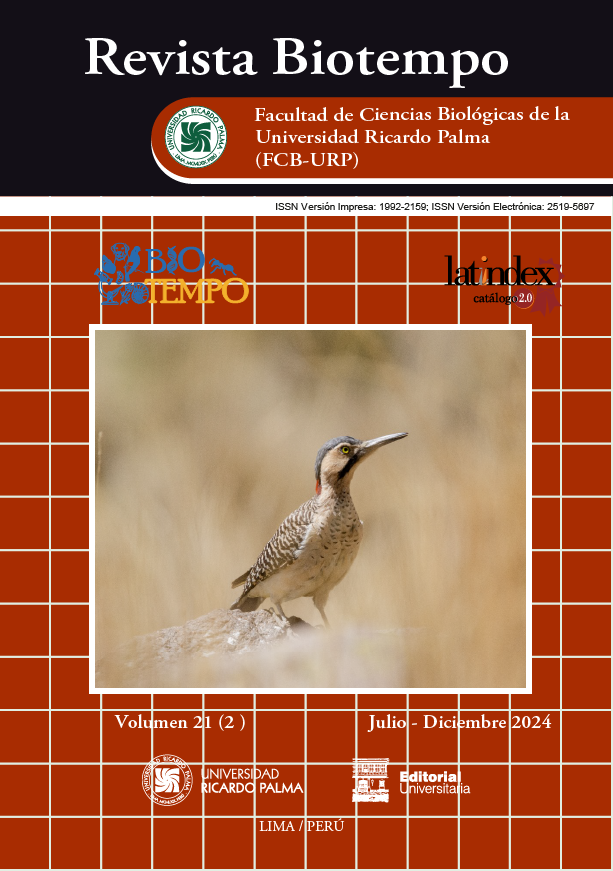Implementation of green walls on the east and west facades of the faculty of biological sciences of the Ricardo Palma university, lima-Peru and the reduction of energy consumption and co2 emission
DOI:
https://doi.org/10.31381/biotempo.v21i2.6680Keywords:
carbon dioxide , energy consumption , energy efficiency , green wallsAbstract
The research aims to demonstrate the reduction in energy consumption in the adjacent environments of the east and west facades of the faculty of biological sciences of the Ricardo Palma university, Lima-Peru through the implementation of green walls. The use of electrical lighting and artificial climate control systems has led to buildings with a high CO2 emission index due to the large energy consumption required for their proper operation. The implementation of the three types of green walls, which prevent the heating of brick walls through their shade and thermal transmittance value, has allowed for an 80% reduction in energy consumption, due to the improved thermal performance of the adjacent environments. Additionally, this has reduced the building's CO2 emissions to only 2 tons per year due to the decrease in conventional consumption that the adjacent environments of the brick walls previously had. This improvement in thermal comfort is promoted by the green wall proposal on the east and west facades. The work demonstrates that green walls are a solution that improves indoor environmental conditions, reduces energy consumption, and enhances the natural habitat by decreasing CO2 emissions.










